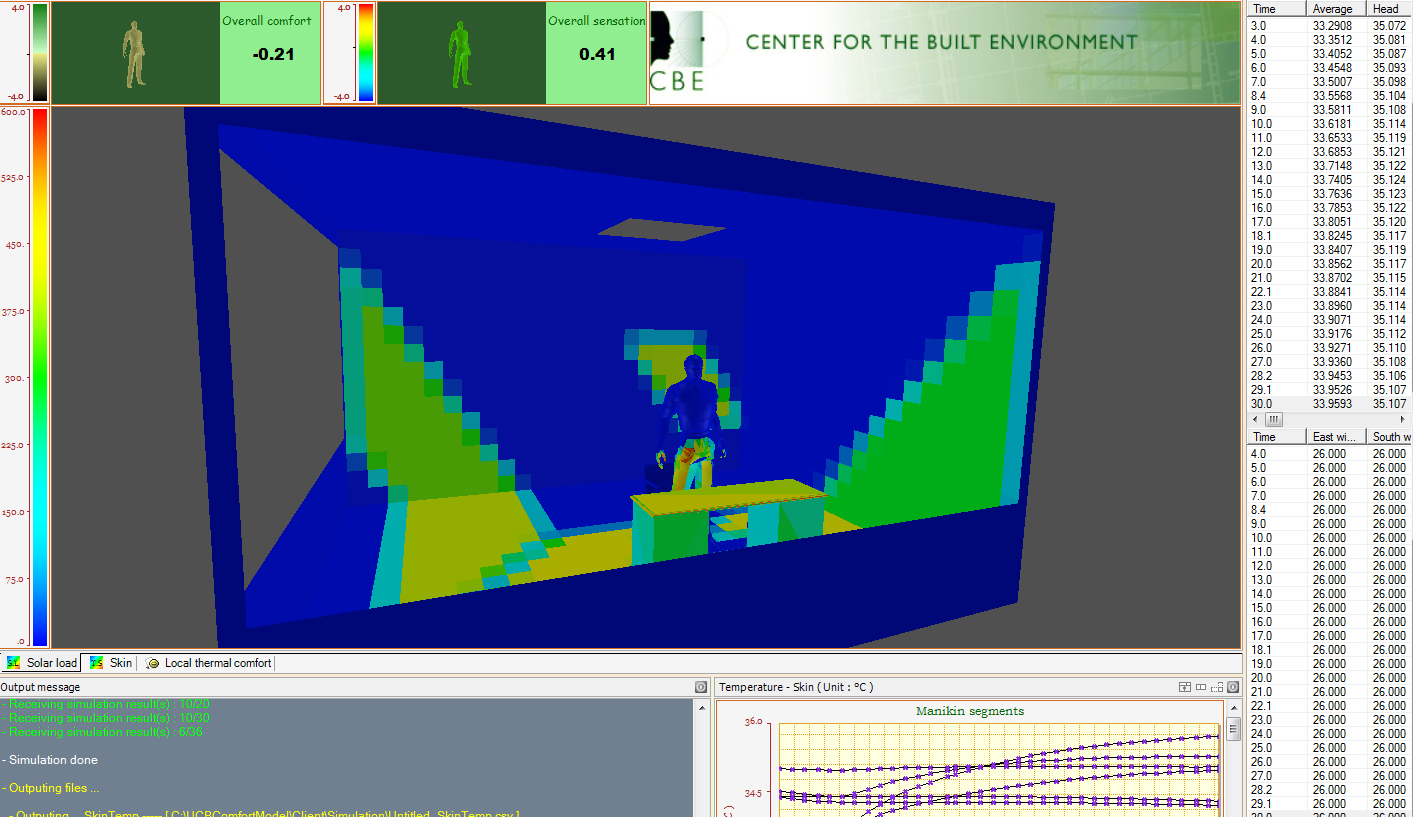A tool for predicting human comfort resulting from HVAC, building and facade design decisions.
Status: Completed
Funding Sources: CBE Industry Consortium California Energy Commission GM/DOE Delphi Thermal Systems Research Grants
Project Objective
Develop a computer model of the human body that is sensitive to detailed thermal complexities around the body. It allows for prediction of comfort and thermal perception, for the body overall, and for specific body parts.
Significance to Industry
Buildings are currently designed to achieve comfort by creating static, uniform interior environments. In reality we know that neither indoor environments nor building occupants are static, and that the thermal environment experienced by an occupant in a building is often quite complex. In addition, new approaches to building conditioning require an advanced understanding of how occupants respond to thermal environments. By better understanding occupant comfort in buildings, the building industry may increase revenues for building owners and tenants through improved employee health, satisfaction, and productivity.
Research Approach
The Advanced Thermal Comfort Model, originally developed by the Building Sciences Group at UCB for the evaluation of human comfort in automobiles, is one of the most sophisticated thermal comfort models in existence. The comfort models for local body parts and body overall are based on intensive human subject testscarried out at CBE environmental chamber. So far, these are the only models available which predict comfort for local body parts, therefore a good model to predict comfort under non-uniform environments. The model has been under development at UC Berkeley since the early 90s.
The model includes a user interface with the ability to create a room with windows and place the occupant anywhere in the room. We have also developed a library of HVAC systems and creating a simple model for describing stratification and other non-uniform properties. The model is capable of evaluating the effects of solar gain through windows by calculating how much radiation is hitting the body and where. Based on the description of the environment, the model can generate graphic results such as skin temperature distributions, equivalent homogenous temperatures, and overall comfort indices.
This tool has numerous applications in building design and building science research. For example, we conducted studies on comfort stratified environments, as typically found in displacement and UFAD systems, and also developed guidelines for the design and operation of radiant systems. We have studied comfort implications of facades and glazing, which may lead to the development of a new standard for use by window manufacturers and specifiers. In the longer term, we plan to integrate the model with energy simulation tools and CFD software so advanced comfort analysis can become a standard part of energy simulation and CFD prediction, and develop comfort rating systems for products such as windows and HVAC components.
Publications and Reports
Zhang, H., E. Arens, C. Huizenga, T. Han, 2010. Thermal sensation and comfort models for non-uniform and transient environments: Part III: whole-body sensation and comfort. Building and Environment, 45(2), 399-410.
Arens, E., H. Zhang, and C.Huizenga, 2006. Partial- and Whole-body Thermal Sensation and Comfort, Part I: Uniform Environmental Conditions. Journal of Thermal Biology, 31, 53 – 59.
Arens, E., H. Zhang, and C.Huizenga, 2006. Partial- and Whole-body Thermal Sensation and Comfort, Part II: Non-uniform Environmental Conditions. Journal of Thermal Biology, 31, 60 – 66.
Zhang, H., C. Huizenga, E. Arens, T. Yu, 2005. Modeling Thermal Comfort in Stratified Environments. Proceedings, Indoor Air 2005: 10th International Conference on Indoor Air Quality and Climate, Beijing, China, September.
Huizenga, C., H. Zhang, et al., 2001. A model of human physiology and comfort for assessing complex thermal environments. Building and Enviornment, 36(6): 691- 699.

